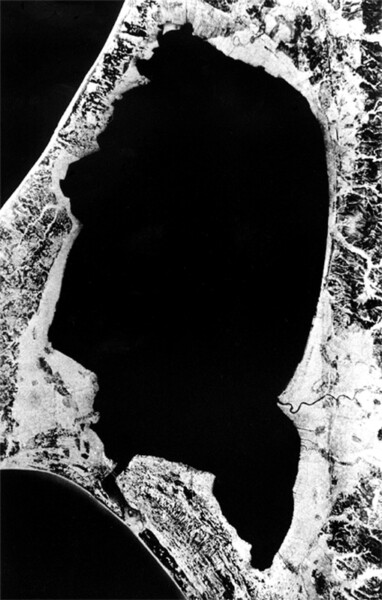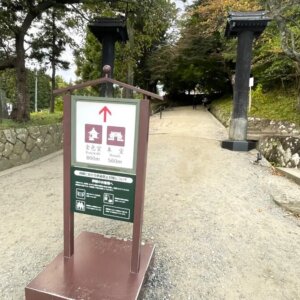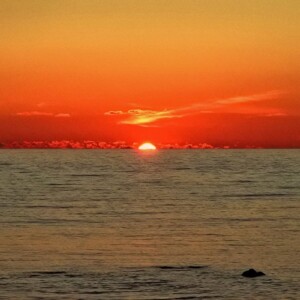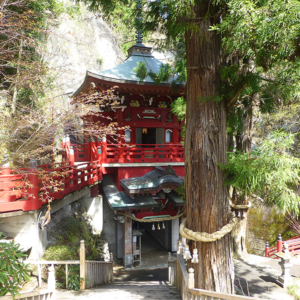
[Hirogata reclamation history ①] The second largest lake in Japan has become a vast rice field [Ogata Village, Akita Prefecture]
table of contents
- 1 Oga Peninsula, where its current form was created 2,000 years ago
- 2 Hachiro Lagoon was created by the river carrying sand.
- 3 Hachirogata is a treasure trove of seafood. Traditional fishing methods disappeared due to land reclamation
- 4 Seawater from the vast Hachiro Lagoon is pumped out and used for rice fields. Reclamation projects planned many times
- 5 After World War II, the Hachirogata Lagoon reclamation was realized with technical cooperation from the Netherlands.
- 6 In the Netherlands, 20% of the country was created through land reclamation.
- 7 Reclamation plan created by Dutch expert Professor Janssen and others
- 8 Hachirogata Reclamation was realized with the cooperation of fishermen who depend on Hachirogata for their livelihood.
- 9 It will take 20 years to complete the reclamation. The newly appeared land is 2.5 times larger than the area inside the Yamanote Line.
Oga Peninsula, where its current form was created 2,000 years ago
Before the Oga Peninsula took on its current shape, the surrounding land first emerged from the ocean floor about 20,000 years ago during the Ice Age. As ice in the Northern Hemisphere and Antarctica increased, sea levels fell and land became land. Eventually, when the Ice Age ended, the sea level began to rise, and about 6,000 years ago, all but a small island off the coast sank into the sea again. 6,000 years ago was the latter half of the Jomon period, and it is said that this was the time when the earth's temperature was at its highest, and the sea level was 2 to 3 meters higher than it is now.
The Earth cooled down again about 4,000 years ago. As a result, the sea level gradually fell, and the island (Ogashima) that was off the coast grew larger and larger, and the distance between it and the mainland became narrower. Sand brought by the Yoneshirogawa River to the north and the Omonogawa River to the south (Akita City at the mouth), and sand carried by water currents. Oga Island and the mainland became connected to the mainland around 2,000 years ago. This is the birth of the Oga Peninsula.

Hachiro Lagoon was created by the river carrying sand.
Although Oga has become a peninsula, shallow seawater remains inside the sand spit. This is Hachirogata. Although the water is only 4 to 5 meters deep at its deepest point, it has an area of approximately 22,000 hectares (220 square kilometers/approximately 12 km from east to west and approximately 27 km from north to south), making it the second largest lake in Japan after Lake Biwa.

Hachirogata is a treasure trove of seafood. Traditional fishing methods disappeared due to land reclamation

Since Hachirogata is a brackish water lake, it is home to many fish species and has been a popular fishing industry since ancient times. Under-ice fishing " was a winter tradition, in which fish were caught by drilling holes in the thick ice of lakes that were completely frozen over and catching fish by inserting nets into the holes.

“Ice fishing” is a traditional fishing method that has continued since before the Edo period, and the Edo period traveller Masumi Sugai detailed the illustrations in his book “ Ice Fish Village Kimi is left.


Seawater from the vast Hachiro Lagoon is pumped out and used for rice fields. Reclamation projects planned many times
For the people of the Oga region, who have a small amount of cultivated land and often suffer from rice shortages due to cold weather damage, it has long been their wish to turn Hachiro Lagoon into agricultural land due to its shallow waters. It seems that reclaiming part of Hachirogata and turning it into farmland has been practiced for quite some time, but in the late Edo period, Watabe Onomatsu , ) the Hachiro Lagoon water canal plan and is working on converting it into large-scale farmland. It is said that during the Hachirogata Canal Project, which was carried out from 1822 to 1826, the coast of Hachirogata was reclaimed and converted into 20 hectares of farmland.
Even after the Edo period changed to the Meiji period, plans were launched several times to turn the entire Hachirogata into farmland.
Yoshitake Shima who was appointed the first prefectural governor of Akita, announced a development plan for Hachiro Lagoon, solicited donations from the general public, and went to Tokyo to meet government officials. I submitted a plan to Toshimichi Okubo, but the plan never came to fruition .
In 1923 (Taisho 12), Kanichi Kachi Ministry of Agriculture and Commerce (a state agency that combined the functions of the current Ministry of Agriculture, Forestry and Fisheries and the Ministry of Economy, Trade and Industry) and others created a land use plan for Hachiro Lagoon, which was adopted by the national government. We had been preparing for a field survey as part of the project, but this was also postponed due to budget constraints. The Kachi plan is to turn more than 50% of Hachiro Lagoon into agricultural land through land reclamation, and leave the remaining lake as a residual lake in the center of the reclaimed land to be used as agricultural water and as a flood control pond. That was the plan.

In the Showa era, in the 1910s, plans were made for the Kanamori plan to use Hachirogata as an industrial site, and the Morooka plan, which was a modification of the Kachi plan, but both plans were scrapped due to the outbreak of the Pacific War.
After World War II, the Hachirogata Lagoon reclamation was realized with technical cooperation from the Netherlands.
Defeat in World War II caused Japan to experience major food shortages. There was an urgent need to greatly increase rice production, and the government promoted reclamation projects in areas such as Isahaya Bay (Nagasaki Prefecture) and Inbanuma Hachirogata was included in this plan, and the Kano plan, which was similar to the current version, was presented, but it could not be started due to opposition from local fishermen and project costs. However, given the political climate of dealing with defeat in the war, a path to realizing this dream began to emerge.
Japan will have difficulty dealing with the countries of the United Nations. On September 8, 1951, the ` `San Francisco Peace Treaty '' was signed in San Francisco, USA, During the negotiation process, one of the conditions for peace from the Netherlands was that Japan should utilize Dutch technology.
Atsushi Shimokawabe, , who was 26 years old at the time and later became a national land affairs official, realized that the Netherlands was an advanced country in land reclamation. Vice-Minister) proposed to then-Prime Minister Shigeru Yoshida reclamation of Hachirogata would be possible with Dutch technology This was the moment when the Hachirogata Lagoon reclamation, which had been considered impossible, suddenly moved towards becoming a reality.
In the Netherlands, 20% of the country was created through land reclamation.
Since the 13th century, the Netherlands has been actively engaged in land reclamation, expanding its territory. Most of the country is flat land, and the west side faces the North Sea. Since the coastline is at almost the same altitude as sea level, it has suffered from seawater erosion and flooding from storms since ancient times. Reclamation was considered as a way to somehow stop the flooding and further increase the land area of the country.
Possible ways to drain water and create new land are ``reclamation'' and ``reclamation.'' “Reclamation,” as the name suggests, “fills in holes, beaches, ponds, etc. with new earth and sand,” basically raising the earth and sand higher than the original water surface. This requires a huge amount of earth and sand to create a large area of land.
On the other hand, "reclamation" involves simply draining the water and using the land as is. It seems easier than "landfilling" because all you have to do is drain the water, but the problem is that the new land is below the water level. A wealth of experience and technical skills are essential for building strong embankments and drainage facilities in case of emergencies. In the case of the Netherlands, ``reclamation'' was chosen because the sea facing the area was shallow and there was simply not enough earth and sand to be transported for reclamation. Initially, the reclamation project started little by little, but over the next 700 years until the 20th century, they created a whopping 8,100 square kilometers of new land (approximately 20% of the land area of the Netherlands, approximately 12 times the size of Lake Biwa), and their experience and technological capabilities were outstanding. It was excellent.
Reclamation plan created by Dutch expert Professor Janssen and others

Reclamation has been practiced in Japan for a long time. It is said that land reclamation in the Ariake Sea began during the Asuka period, and agricultural land has been expanded through land reclamation throughout the country. However, even in the middle of the Showa era, there was no experience with large-scale reclamation projects like Hachirogata.
The San Francisco Peace Treaty is signed, and engineers from Japan come to study in the Netherlands. In 1954 (Showa 29), Peter Phillips Janssen , came to Japan from the Netherlands, and the Hachiro Lagoon reclamation project began in earnest.
Hachirogata Reclamation was realized with the cooperation of fishermen who depend on Hachirogata for their livelihood.
Hachirogata has been a lake with abundant marine resources since ancient times, and after the end of the war, approximately 20,000 people from approximately 3,000 households earned their livelihood from fishing. For fishermen, the reclamation of Hachirogata is a matter of life and death. Of course, there was a huge opposition movement.
The Ministry of Agriculture, Forestry and Forestry (currently the Ministry of Agriculture, Forestry and Fisheries) and Akita Prefecture, who desperately wanted to increase farmland for food self-sufficiency, negotiated persistently with opposing fishermen, and in August 1957 a compromise was reached. In December 2017, the `` Memorandum on Implementation of Fisheries Compensation Issues Associated with the Hachiro Lagoon Reclamation Project '' was signed. It was agreed that a total of 1.69 billion yen would be paid as fishing compensation, and the reclamation project began in earnest.
It will take 20 years to complete the reclamation. The newly appeared land is 2.5 times larger than the area inside the Yamanote Line.

The reclamation project, which aims to convert 80% of Hachirogata into farmland, began with the construction of an embankment approximately 52 km in length. When the embankment is completed, the water inside the embankment is drained out using powerful pumps. Ogata Village was established in 1964, and drainage was completely completed in 1966 (Showa 41). construction works including converting the land into farmland were completed in March 1977 (Showa 52). The reclaimed area is approximately 15,666 hectares (approximately 157 square kilometers), all of which belongs to Ogata Village.
Ogata Village<Information>
- Location: Ogata Village, Minamiakita District, Akita City
- Phone number: 0185-45-2111
- reference
(Continued to “History of Hachiro Lagoon Reclamation 2”)




![[History of Hachirogata reclamation ③] Earth lower than sea level... The lifeline is water management [Ogata Village, Akita Prefecture] The southern drainage pump station almost blocks off the regulation pond (on the right) and the western waterway (on the left). The long waterway in the center is the central main drainage channel ©Oga Peninsula/Ogata Geopark](https://jp.neft.asia/wp-content/uploads/2024/07/WIA8xMbfFUTs8kQ1720954526_1720954532-150x150.jpg)











